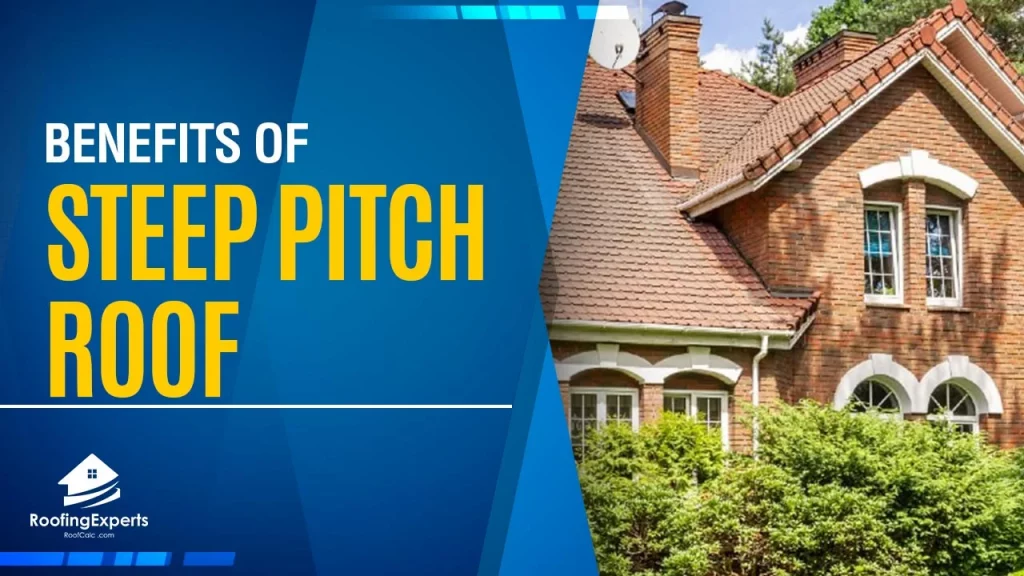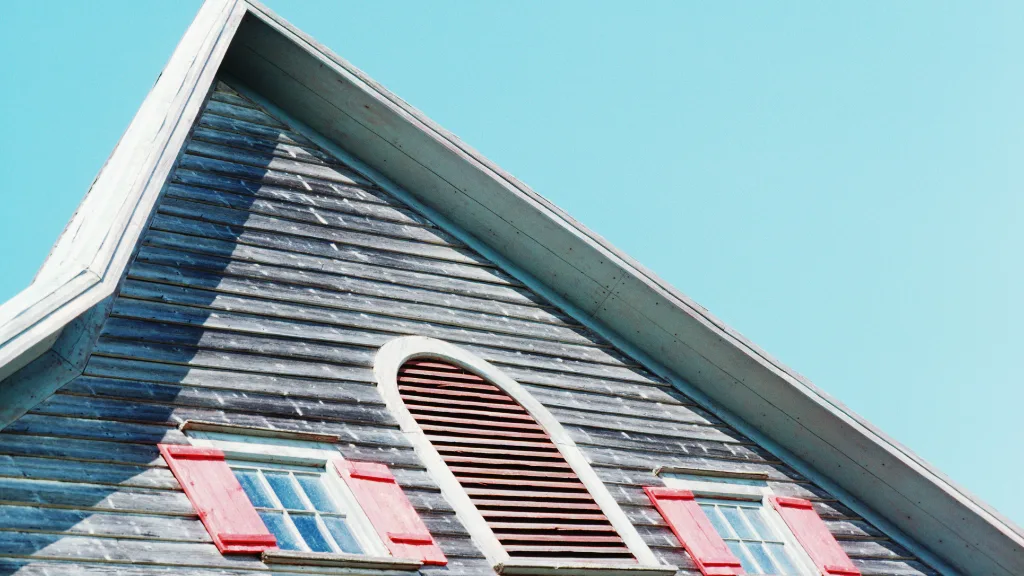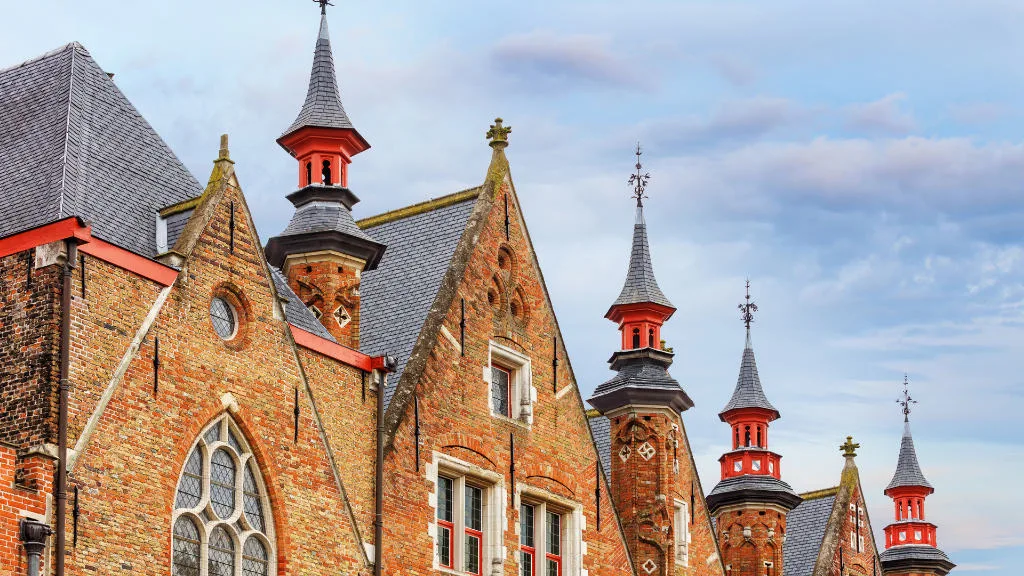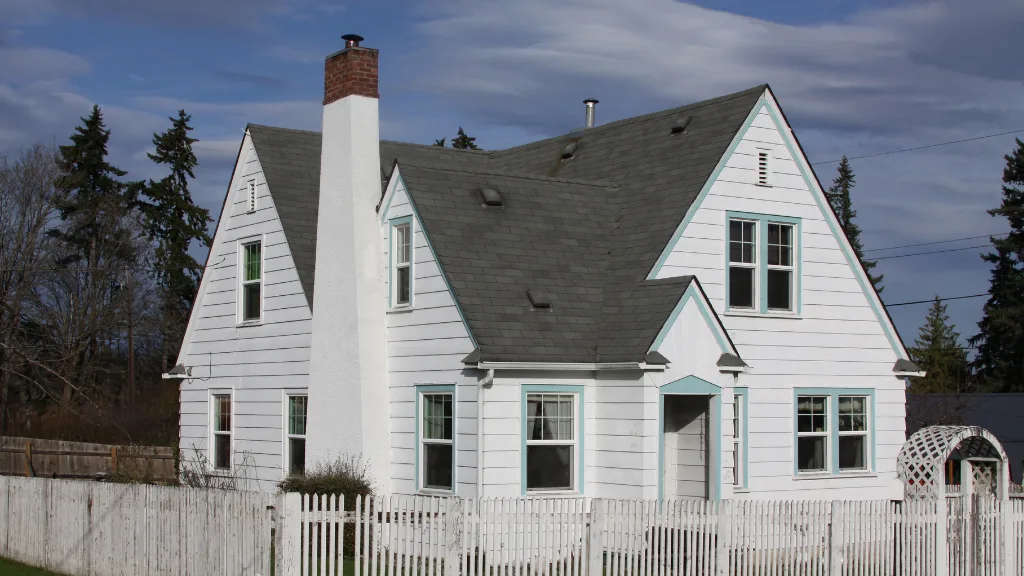
A steep pitch roof is an architectural element that has been around for centuries. There are many benefits to having a steeply pitched roof, which we will discuss in this blog post.
Steep roofs have some drawbacks too, but if you’re considering installing one on your home or building, then it’s important to first understand the pros and cons of the design so you can make an informed decision.
What is a Steep Pitch Roof?
A steep pitch roof is a roof with a high vertical angle. Common designs are typically gabled, however there are other types of steep pitch roofs that are slanted at steeper angles.
Steep pitch roof has many advantages, especially in regions where snowfall is common. The steeper angle reduces the amount of weight on the roof, and therefore reduces the risk of roof collapse and damage.
The other major advantage of a steep pitch roof is that it allows snow to slide off more easily, helping to prevent breaking or falling objects due to accumulated weight.
Steep pitch roofs are not very common, but they are usually only seen in regions with heavy snowfall.
This type of roof is not very common in the United States, but it is very common in Canada, Japan, and other countries with harsh winters.
The use of steep pitch roofs has reduced over time as improvements have been made to the insulation of houses.
A steep pitch roof means that less of a house’s heat can escape due to its high vertical angle cutting out more of the house’s space.
However, only so much insulation can be added before adding too much weight to the roof also becomes a problem.

So What are the 7 Benefits of Having a Steep Pitch Roof?
As said, there are many advantages to having a steep pitch roof.
Benefit # 1: Less pooling of water means less danger
Water can pool on flat roofs, which increases the risk of dangerous leaks.
A steep pitch roof prevents this from happening by pushing all water off to one side and away from your home’s walls.
This also helps prevent ice dams because there is no place for melting snow to accumulate under the roofline and freeze into a block of ice that then damages your roof.
Less snow accumulation means less risk of collapse – Roof collapses are a very serious matter that can cause extensive damage to the roof and even the structure of your home.
A steep pitch roof reduces this risk by allowing heavy accumulations of snow to slide off easily, preventing it from accumulating in one place for too long or building up enough weight to break your roof.
- A steep pitch roof reduces weight – Steep roofs are not very common in the United States, but they are more common elsewhere with heavy snowfall because of their high vertical angles that shed water and reduce risk of collapse or damage from accumulating snow.
- This makes them ideal for regions where winter weather is harsh enough to warrant this type of design.
- A steep pitch roof is a permanent solution – If you are considering adding an overhang or other type of temporary shelter to protect your home from snow, consider what’s going to happen in the future when winter weather isn’t as severe.
- A steeply pitched roof will allow water and snow to slide off easily even with accumulated weight because of its vertical angle.
Benefit # 2: Better Energy Management
A steep pitch roof allows a home’s structure to be exposed more fully, which means that the building can radiate its own heat back into itself rather than losing it to a flat roof.
This also helps prevent ice dams because there is no place for melted snow to pool and turn to ice under your house.
A steep pitch roofs reduce energy costs – The benefits of a steep pitch roof help ensure that your home is properly insulated and reduces heating costs in the winter.
A steep pitch roofs helps preserve insulation – A steeply pitched roof has less surface area than other types of roofs, which means that it can retain heat better by not allowing much to escape into the atmosphere above your house.
This also helps prevent ice dams because there is no place for melted snow to pool and turn to ice under your house.

Benefit # 3: Style and Decoration – Steep pitch roofs are not very common in the United States, but they are more common elsewhere.
This type of roof has a unique appearance that can add character to your home’s exterior while protecting it from harsh weather conditions.
They not only add to the aesthetic appeal of a home, but they also allow for more creative gable and decorative cap ideas.
A steep roof, on the other hand, is considerably simpler to inspect for any warning indications without having to climb up the ladder from a professional standpoint.
Benefit # 4: Allows you more storage space
That vast area beneath a steep roof slope is useful for more than simply air!
The development of larger attic areas, which are excellent for seasonal or long-term storage, is aided by a steep roof. What’s the nicest part?
Because the area is already there, these storage cabinets usually have little to no installation costs.
Benefit # 5: Less snow concerns
In a snowy atmosphere, a steep roof is typically superior, which is why you see those huge A-frame homes in colder regions. This helps the snow slide off before it becomes too thick.
On a steep slope, ice melts more quickly, preventing the formation of ice patches or dams that can cause moisture to seep down into your roof.
Benefit # 6: Less debris
On a low-slope roof, needles, leaves, branches, and dirt stay there longer than they would on a high-pitch roof. Even after storms, your roof will stay looking clean because of that steep grade.
Benefit # 7: Durable
A steep roof is less likely to leak. A low-slope roof will bend under the weight of too much snow, whereas a steep pitch provides better drainage and water flow off your rooftop which means that there are fewer chances for leaks as well as ice dams.
In conclusion, the benefits of a steep roof are endless. The best part is that it can be completely customized to your home’s design and needs, including storage space or even the ability to install solar panels on top!


